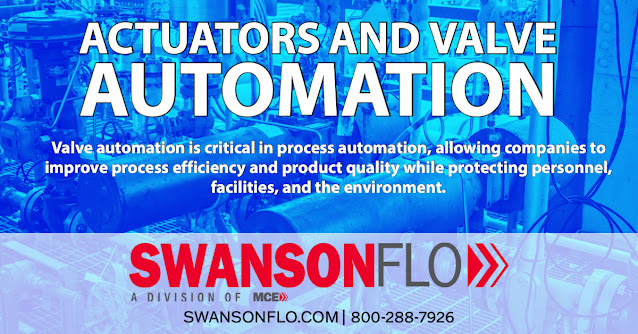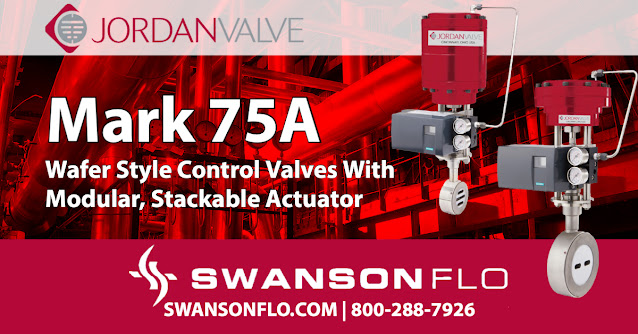
The Swanson Flo Blog is dedicated to provide educational and new product information on process control instrumentation, control valves, and valve automation. For more information on these products, visit SwansonFlo.com or call 800-288-7926.
Swanson Flo: The Low Flow Experts
Actuators and Valve Automation
TYPES OF VALVE ACTUATORS
Demonstration of Ultra Low Flow Control Loop Combining the Equilibar Precision Valve and the Bronkhorst Mini CORI-FLOW™ Meter
Fractional Flow Control Valves from Swanson Flo
For Critical Fractional Flow Control of Liquid, Gas, or Steam
LowFlow control valves have applications in OEM, laboratory, and pilot plant applications. Installations such as these frequently require valve trim changes to meet varying flow requirements for a given application. Monel, Hastelloy, Alloy 20, Titanium, Kynar, and Inconel are just a few of the materials LowFlow offers to address your material compatibility challenges.
Gas Flow Measurement & Control - Aeration Applications
Many processes include gas flow measurement and control. Gas flow meters are standard in laboratories, machinery, industry, hazardous areas, and various markets, including the analytical market, the chemical industry, renewable energy, the semiconductor industry, the food and beverage industry, and surface treatment.
Applications for Aeration
Aeration is when air, oxygen, carbon dioxide, or other gases circulate, mix, or dissolve in a liquid or substance.
Aeration applications are typical in food and beverage markets, wastewater treatment, fish tanks, and fish farms. Controlling oxygen levels in beer brewing and winemaking, for example, allows fermentation. Milk, sparkling water, and other carbonated beverages, such as cola require a throughflow of gases to remove odors or add CO2. Industrial gas flow control, similar to air pumps in a fish aquarium, is used to aerate ponds to grow fish or algae.
Gas Flow Aeration Markets:
- Winemaking and beer brewing
- Production of carbonated beverages
- Fermenters and bioreactors
- Treatment of wastewater
- Farms for fish and algae
Why Bronkhorst?
- Robustness
- High repeatability
- Easy to check actual gas flow
- Gas consumption monitoring
- Ingress protection class IP65 rugged and waterproof housing
Bronkhorst provides mass flow meters and controllers with capacities of up to 5000 ln/min Air equivalent. In aeration applications, up to 50% of MASS-STREAM flow measurement and control instruments include a multi-functional display that provides various additional options.
Bronkhorst is a company that specializes in gas flow measurement and control instruments.
For more information about Bronkhorst products in North Dakota, South Dakota and Minnesota contact Swanson Flo. Call 800-288-7926 or visit https://swansonflo.com.
New Product Alert: The Jordan Valve Mark 75A
Jordan Valve Introduces the Mark 75A Wafer Style Control Valve
Jordan Valve designed the Mark 75A as the next generation of control valves with its modular, stackable actuator. The Mark 75A incorporates a modular, stackable actuator to reduce weight and footprint dimensions further while providing additional torque and all of the benefits of the time-tested Sliding Gate seat design in a lightweight, compact body. The Mark 75A, which is available in 1" through 6" (DN25 - DN150") sizes, is a high-value solution used in a variety of applications.
DOWNLOAD THE MARK 75A DATA SHEET HERE
Mark 75A Advantage: An Actuator with Modularity and Stackability
The new actuator design has an effective diaphragm area of 25 square inches per module and can be stacked to increase the total effective area to 50 or 75 square inches. The use of aluminum in the construction ensures a lightweight automated package.
Mark 75A Advantage: Less Weight
The Mark 75A has a significant weight advantage over other valve designs. A 4" Mark 75A with a 75M actuator weighs 27 lbs. Because of the lightweight and reduced envelope dimensions, transportation, installation, and support costs are lower.
For more information about the Mark 75A in Wisconsin, Indiana, Minnesota, South Dakota and North Dakota, contact Swanson Flo. Call them at 800-288-7926 or visit https://swansonflo.com.





